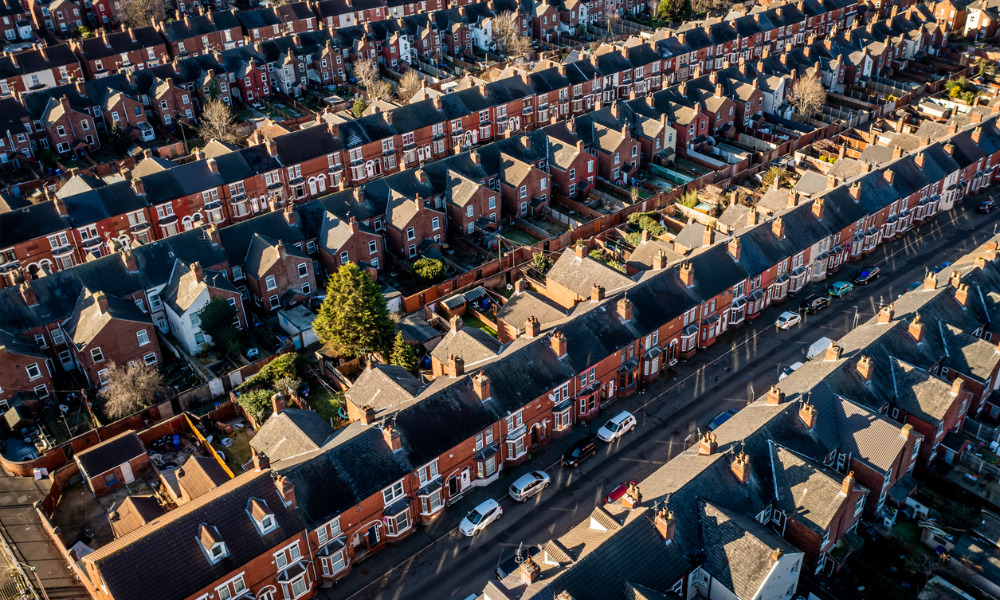Activity likely to gain momentum if trends are maintained, says economist

UK house prices fell by 0.2% to an average of £261,142 in March, the Nationwide Building Society has reported.
Despite the month-on-month fall, the annual growth rate in house prices increased to 1.6% in March, up from 1.2% in February, indicating a slight uptick in the property market’s overall health.
There was also an increase in activity from the low levels at the end of 2023, though it remains subdued compared to historical norms.
“The number of mortgages approved for house purchase in January was around 15% below pre-pandemic levels,” said Robert Gardner, chief economist at Nationwide Building Society. “This largely reflects the impact of higher interest rates on affordability. While mortgage rates are below the peaks seen in mid-2023, they remain well above the lows prevailing in the wake of the pandemic.”
Commenting further on the findings of the latest Nationwide House Price Index, Gardner pointed out that improvements in the cost-of-living situation and a move towards the inflation target have led to a more positive consumer sentiment.
“Moreover, with income growth continuing to outpace house price growth by a healthy margin, housing affordability is improving, albeit gradually,” he said.
“If these trends are maintained, activity is likely to gain momentum, though the pace of the recovery is still likely to be heavily influenced by the trajectory of interest rates.”
Mark Harris, chief executive of mortgage broker SPF Private Clients, agreed, noting the “significant impact” mortgage rates have on both activity levels and house prices.
“Buyers and sellers have been more active since the start of the year as it looks as though base rate has peaked, and the next move in rates will be downwards,” he said. “However, affordability is still an issue for many, thanks to many consecutive rises in base rate before we got to this point, along with the elevated cost-of-living, particularly energy costs and food.
“There are likely to be ups and downs in mortgage pricing in the weeks and months ahead as lenders jostle for position and business, but there is a growing feeling of optimism that the situation is improving overall, which will be welcomed by hard-pressed borrowers.”
According to Ed Phillips, chief executive of estate and letting agency group Lomond, the UK property market is gradually responding to the “overarching air of stability” that has developed since interest rates were held at 5.25%.
“While we’re yet to see any notable jump in property values just yet, market momentum is building, with a firm foundation now laid to facilitate further growth as we head into what is traditionally the busiest time of year.”
All regions see annual price growth in Q1 2024
Based on the Nationwide figures, there were improvements across all UK regions in the annual rate of change in house prices in the first quarter of 2024.
Quarterly regional house price indices reveal that although some areas reported annual declines, there was an overall improvement. Northern Ireland stood out as the top performer, with a 4.6% increase compared to the first quarter of 2023.
England overall saw a modest year-on-year increase of 0.4%, while Wales reported a 1.2% increase. Scotland’s annual price growth accelerated to 3.7%.
The North of England saw the most significant improvement, with a 4.1% increase, making it the best-performing English region. Northern England, encompassing regions from the North to the West Midlands, saw a 1.7% increase in prices year-on-year.
Southern England experienced a slight decrease of 0.3% over the same period. London, however, emerged as the best-performing region in the south with a 1.6% increase, while the South West lagged behind, with prices falling by 1.7%.
Want to be regularly updated with mortgage news and features? Get exclusive interviews, breaking news, and industry events in your inbox – subscribe to our FREE daily newsletter. You can also follow us on Facebook, X (formerly Twitter), and LinkedIn.



